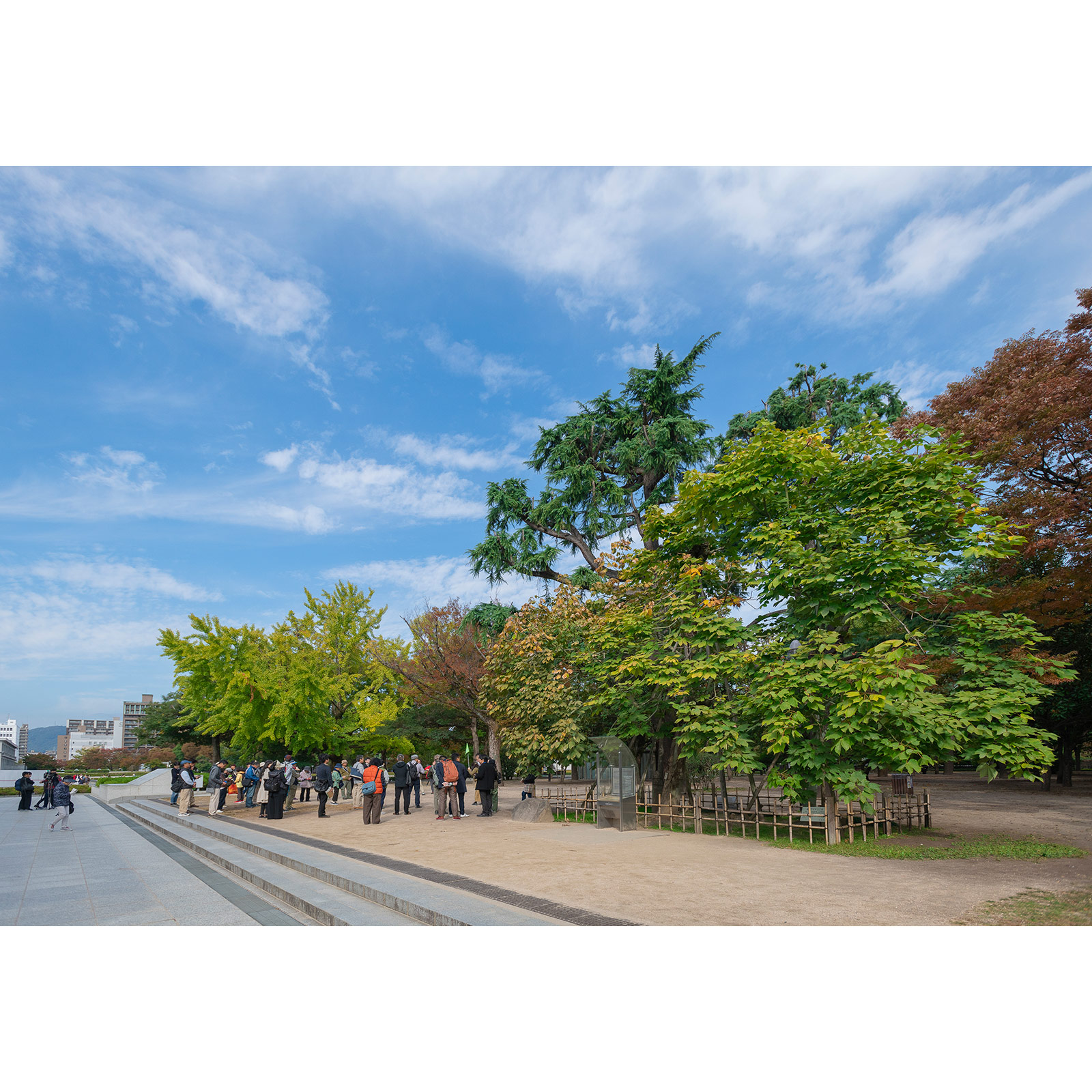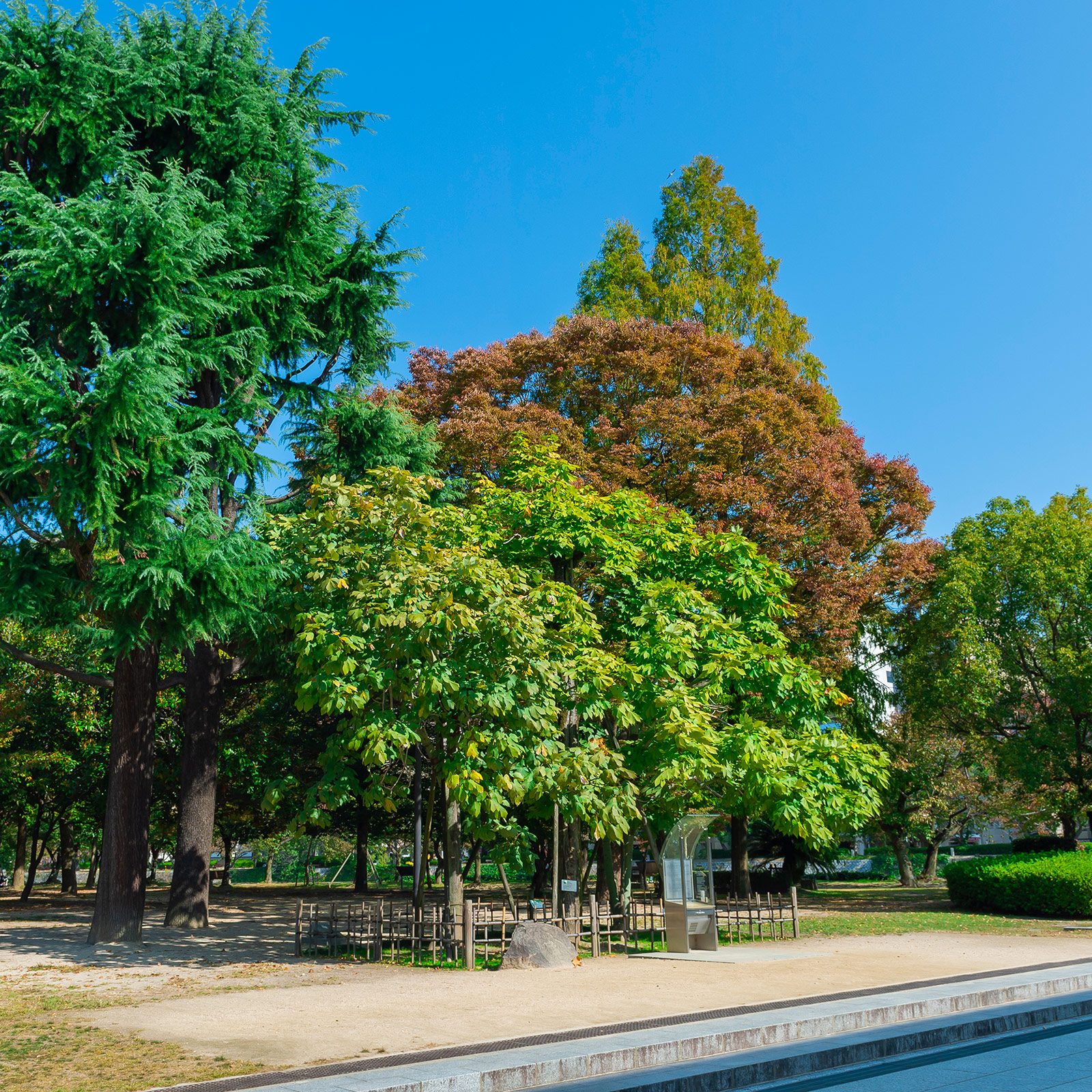広島平和記念資料館のそばに立つアオギリは、爆心地から1,300m離れた広島逓信局で被爆しました。4階建てだった建物は壊れ、爆心地側の中庭に植えられていたアオギリも、熱線と爆風をまともに受けたと伝えられています。幹の半分がえぐられながらも生き抜いて、翌年、新しい芽を吹き返した2本が、1973年に現在の場所へ移植されました。その生命力の強さに多くの人が勇気づけられ、再生のシンボルとなって、被爆樹木の存在を広く知らしめた木でもあります。大きな傷痕を残した被爆アオギリの隣には、その種から芽吹いた二世が育っています。この二世の苗木が、平和への願いを込めて広島市内の小学校に植樹され、2000年からは世界各国の500カ所以上に贈られました。アオギリの願いは海をこえ、時をこえて、受け継がれています。
The Chinese parasol trees, which stand by the Hiroshima Peace Memorial Museum, originally stood 1,300 meters away from the hypocenter at Hiroshima Teishin Hospital. The four-story hospital collapsed, and the parasol trees, planted in the courtyard facing the hypocenter, also sustained heavy damages from the intense heat and blast winds. Their trunks were deeply hollowed by the bombing, but despite losing half of their trunks, they managed to survive. The next year, new buds began to sprout, and they were replanted in their current location in 1973. These trees also helped the hibaku trees of Hiroshima become more widely known and became a symbol of rebirth, their vitality bringing hope to the citizens of Hiroshima. Next to the damaged parasol trees, you can find second-generation trees which grew from their seeds. These second-generation seeds and saplings have been planted at elementary schools in Hiroshima City in the hopes of peace, and, beginning in 2000, have been sent to over 500 countries around the world. The hope symbolized by these trees continues to live on today, a voice from the past carried into the present and over the seas.



